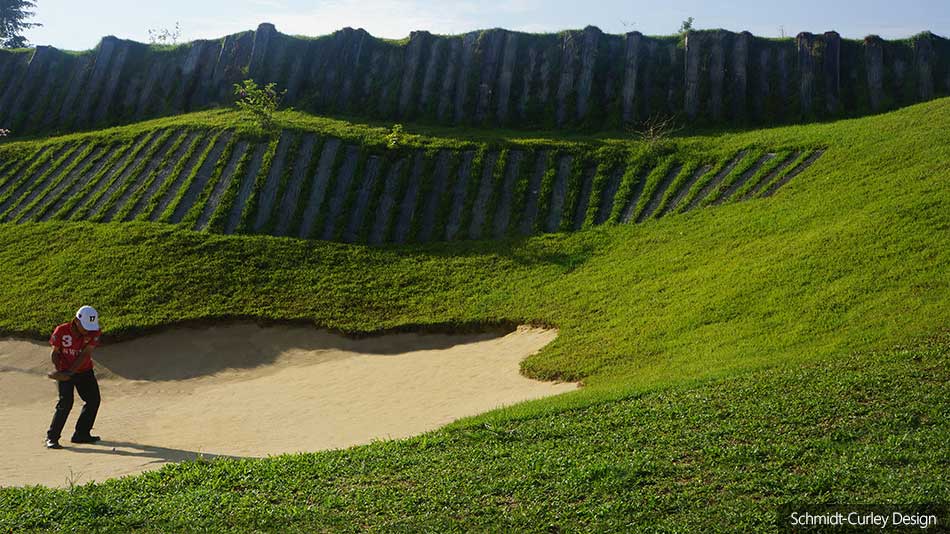Siam Country Club in Pattaya, Thailand, will conduct a soft open this Fall of a new course designed by Brian Curley, ASGCA (Schmidt-Curley Golf Design). The course features a, “generous amount of land dedicated to the design, resulting in a very comfortable and playable feeling for players.”
Golf Course Architecture reports:
“The course differs from the others in its attempt to emulate a more irregular and natural use of turf and bunker lines, transitional bunker edges and mini-fairway tee complexes as opposed to typical individual tees,” Curley said. “While the course design is far removed from many of the rugged and natural designs in fashion today, it is a bit of a hybrid between formal and natural design, especially with its dominant transitional bunkering edges employing native carpet grass that produce a strong contrast in colour and texture.”
Curley has designed the course at Siam Country Club to ensure players find their balls. “The large property enabled us to route holes that leave massive areas in between holes, sometimes planted in thickets of trees and sometimes left open in wide corridors for long views,” said Curley. “The result is a widely varied sequence of holes that are easily distinguished and memorable.
“Green sites are quite varied in their design with some at grade, some built up, and some with strong fall away grades. Also incorporated are distinct lobes set in bowls, kick slopes, backstops, and fairway cut surrounds that use gravity to repel wayward shots. I believe the course will be the most distinct of the four layouts and will give the Old course strong competition for favoured status.”
For this project, Curley worked with a sandy site – unusual for inland Thailand – which provided him with areas to harvest material for sandcapping and creating large waste areas. “The material was easily excavated, a great thing since our reservoir was so deep,” said Curley.
Curley has overseen the reduction of initial turf limits and conversion of rough from turfgrass to native carpet grass, to reduce irrigation demand and conserve water.
“I was very vocal in the initial design discussions to create unique and recognisable design features that would set the course apart from others in the region. This led to many distinct features like the ‘Wall of Death’ and its 19-foot-deep pit, intending to create a buzz with visiting golfers and lure those up to the challenge.
“Here, we were given the opportunity to create the needed elevation change with the vast amount of dirt we excavated from the reservoir on site. This allowed me to prop the sixteenth green well above while still allowing for the site to drain. I also wanted to create a doubled series of railroad ties, something I had never seen done before.
“Unlike the PGA West bunker that is placed right against the green edge, this wall is offset from the green edge by about five-to-six metres, making the recovery even more difficult as you must not only ‘elevate’ but also ‘propel’ the ball forward.
“The ‘railroad ties’ are actually 2.5 metres long concrete sections, sculpted and stained to look like ties buried about a half metre. There is a significant concrete formed curb that holds the upper layer in place to avoid any shifting. The upper wall is almost vertical while the lower wall has more pitch to it to avoid a player drilling the ball back into his or her face. There is a short offset set between the two — in case someone was to stumble from the top — and the bunker slope has a strong flashed slope. The carpet grass surfaces are mowed tight to ensure that no balls hold up on the slope and all make it down to the bottom. There is some vegetation planted on the wall as well — some Bougainvillea and cascades of wedelia — to add to the unique look.
“I do believe there is great variety from hole to hole and features seldom seen in Asian courses, especially the Thai market.”

